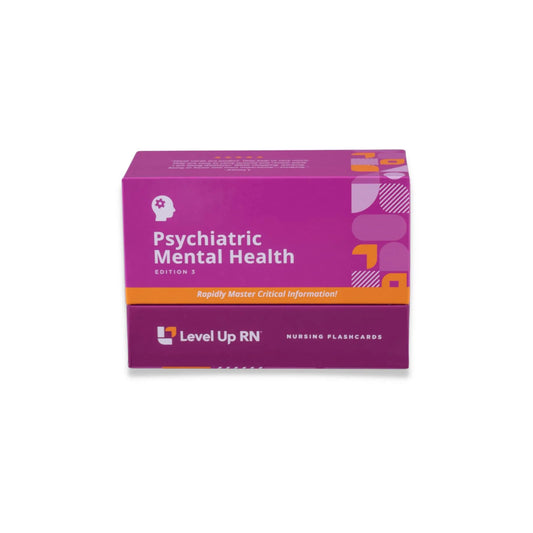In this article, we'll explain the prevention of mental health disorders. There are three levels of prevention you need to know about: primary, secondary, and tertiary. Each denotes a different stage relating to a patient’s mental health.
Psychiatric Mental Health - Nursing Flashcards
This series follows along with our Psychiatric Mental Health Nursing Flashcards which are intended to help RN and PN nursing students study for nursing school exams, including the ATI, HESI, and NCLEX.
Primary prevention
Primary prevention focuses on the prevention of mental health disorders in the community before they occur. This level of prevention aims to decrease risk factors and increase protective factors in order to prevent a mental health disorder from occurring in the first place.
Examples of primary prevention activities include youth groups and clubs, which help to increase community bonds and support; parenting classes; and education to prevent substance abuse, which is a key risk factor for a number of mental health disorders. Decreasing substance abuse has the effect of decreasing the number of mental health disorders in a community.
Secondary prevention
Secondary prevention focuses on the early detection and prompt intervention of mental health disorders. At this level of prevention, a patient already has a mental health disorder, and secondary prevention is aimed at detecting the disorder early in order to intervene promptly.
Essentially, this means screening. Screening patients for depression or suicide risk, for example, can lead to the early intervention ― and prevention — of a more dire outcome.
Suicide hotlines and crisis centers may also be categorized as secondary prevention, where the disorder already exists, but mitigation is possible before the disorder escalates. In this case, speaking to a social worker or trained suicide prevention specialist may help alleviate the situation.
Tertiary prevention
Tertiary prevention focuses on the period after a mental health disorder or crisis has already occurred. The focus at this point is to help promote the patient's recovery as well as to prevent further complications.
Examples of tertiary prevention include outpatient support for a patient following a hospitalization related to a mental health disorder or crisis. It can include pharmacological therapy. And it can include support groups for family and friends of a patient who has died by suicide as a way for them to begin the healing process.



21 comments
Nice! Appreciate this
I find the information easy to understand and will in the future I will be using it in my writing. Thanks for sharing with us.
This information will give me good insights for writing my dissertation.
Very explicit, good.
U have made the context very easily to be understandable 👍